#Trakehner
Text

Easy Game - Trakehner Stallion
65 notes
·
View notes
Text
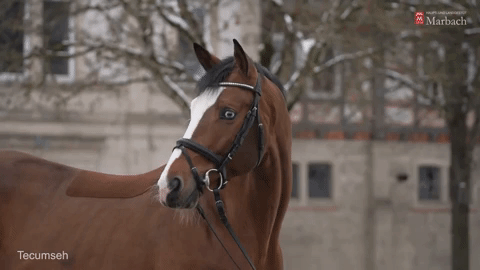

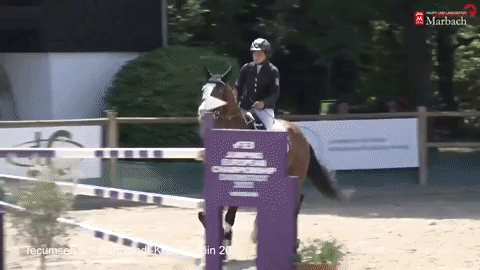
Tecumseh, 2013 Trakehner stallion
Lücke x Hirtentanz
61 notes
·
View notes
Text

Today's Schleich is:
83038 Trakehner Filly
[2021]
12 notes
·
View notes
Text

St. Georg
4 notes
·
View notes
Photo

Deutsches Warmblut.
Ostpreußische Stutbuchgesellschaft für Warmblut Trakehner Abstammung (e. V.). Verband ostpreußischer Warmblutzüchter, Königsberg,
„Casca.“
Geb.: 1925.
V.: Cancara v. Master Magpie xx.
M.: Paste (VI V.-R. II 184) v. Patriot - Veilchenfresser.
Züchter: Backhaus - Enskehmen, Kreis Stallupönen.
Aufzüchter: Frhr. v. d. Goltz-Kallen, Kreis Fischhausen.
Seit 1929 Landbeschäler in Braunsberg. Wird von Züchtern stark benutzt.
In der Hengstprüfungsanstalt Zwion erhielt der Hengst folgende Noten:
Schritt: sehr gut, Trab: sehr gut, Galopp: gut, Konstitution: schwerfuttrig, hart, Temperament: lebhaft, eigenwillig, trotzdem leicht zu reiten und zu fahren.
Züchtungskunde, 1931, Band VI.
16 notes
·
View notes
Text

Instagramのプロフィール写真を変えたよ🐴
3 notes
·
View notes
Text

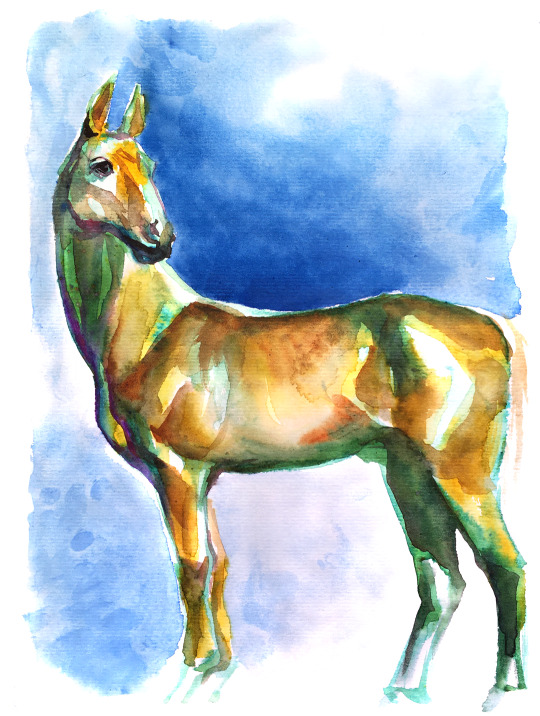
Watercolour studies of Trakehner horses (too curious and active to fit within the chosen paper size)🐎
6 notes
·
View notes
Text




Snowy's Cristobal xx, Trakehner and DSP approved Thoroughbred stallion.
40 notes
·
View notes
Text
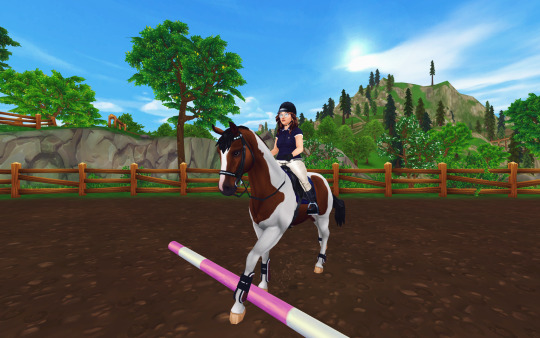


Did some really quick work with Rhythm yesterday! We've been out of practice for a few months now, and its just a little discouraging because it feels like a lot of breakthroughs we had before summer started are reset now. The heat is so bad here I can only get out in the morning to ride, or at least ride at this level.
Before the temperatures got so high, we were working on extending the trot and canter, which she can do, but doesn't do it without a lot of leg. Rhythm is supposed to be my eventer, but you can see in the first two pictures that she wasn't extending over the ground poles and half cavaletti like I wanted her to. She needs to get this down for dressage portions, which I know aren't as advanced for eventers as they are for high level dressage riders, but still.
I am incredibly proud of her in the last photo, though, she has a problem with overjumping and this time she didn't!
#sso#star stable#star stable online#starstable#starstable online#realistic star stable#starstable realistic rp#star stable realistic roleplay#star stable realistic#sso realistic roleplay#star stable rp#star stable roleplay#rhythm#flying lead horse#flying lead equestrian center#moorland#trakehner#sso realistic rp#sso raspberry valley
3 notes
·
View notes
Text
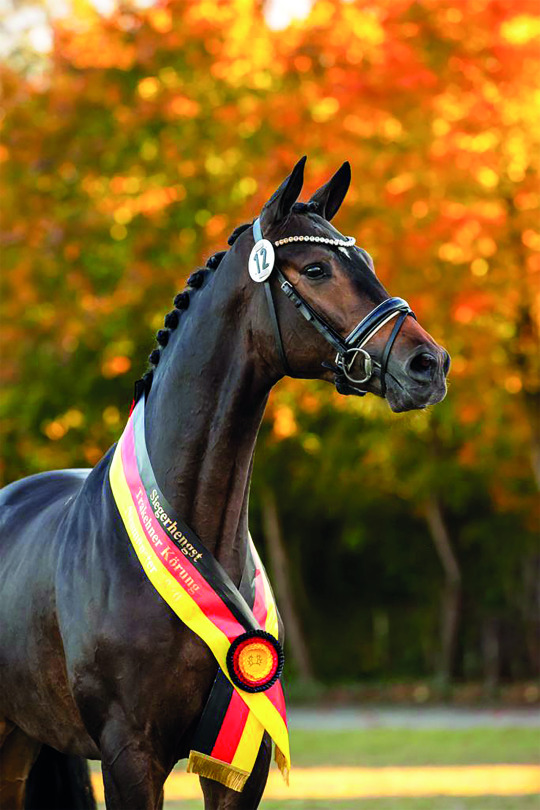
99/۩��Fantastic Warmbloods
Rheinglanz, 2018 Trakehner Stallion
15 notes
·
View notes
Photo
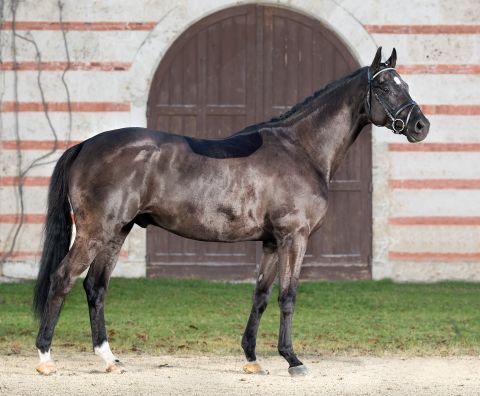
2010 black Trakehner stallion Donauabend/T.
Source: https://hul.landwirtschaft-bw.de/pb/,Lde/Startseite/Hengste/Donauaabend_T_/?LISTPAGE=2853089
3 notes
·
View notes
Text

Trakehner by sonjarommerskirch_photographie
42 notes
·
View notes
Text
As it turns out, importing quality horses for your cavalry is quite expensive. And so it was probably frugality and not some equestrian passion that inspired Friedrich Wilhelm I, king of Prussia, to have a stud farm built in the boggy eastern region of his country.
In 1731, the Crown Stud Farm Trakehnen ( “Königliches Stutsamt Trakehnen”) was established. Some decades later it was renamed to Prussian Main State Stud Farm Trakehnen ( “Preußisches Hauptgestüt Trakehnen”). They started off with around 1100 horses, more than 500 of which were broodmares.

The house of the stable master in Trakehnen
While Friedrich Wilhelm I’s successor Friedrich II still preferred to import his cavalry mounts from eastern Europe, the stud farm persisted. Very few horses were imported to improve the breed during his reign. Mainly because Friedrich did not actually give the stud farm in Trakehnen the money to do so, instead demanding that Trakehnen be profitable on its own.
Nevertheless, some Thoroughbred stallions (like the stallions Admiral, Hake and Pitt) and some Turkish and Persian stallions found their way to Prussia. These were notable foundational stallions that helped refine the breed in its early years.
In 1779 Trakehnen’s stable master Domhardt coined the idea of keeping state stallions (so-called “Landbeschaler”) to be used by local private breeders, both for financial gains and to directly improve the overall quality of the horses bred in and around Trakehnen. Initially, 11 state stallions were kept in Trakehnen. This number was increased to 21 once the success of the state stallions became apparent.
A few years later in 1787, breeding practices in the farm were changed quite drastically: Carl Heinrich August Graf von Lindenau, who’d been tasked with managing the state stud farms in Prussia, inspected the breeding stock in Trakehnen. He deemed 25 of the 38 stallions and 144 of the 356 broodmares to be unsuitable for breeding purposes. During this time the broodmares were sorted into different herds based on type and color. They were divided into carriage/heavy herds, riding herds and a light herd.
As far as I’ve read, the heavy herd was divided into a chestnut, bay and black herd, with the riding herd only being further split by color some years later when their numbers grew.

The black herd out on pasture (x)
1787 was also the year when the elk antlers were introduced as the brand for Trakehner horses.
During the Neapolitan wars, the breeding stock had to be evacuated twice to flee from the French troops: once in 1806, and then again in 1812.
This, and the fact that Prussia had lost more than 90 000 horses during the wars, decimated the breeding stock to a point where only around 600 horses suitable for breeding returned to Trakehnen in 1813.
But with patience and persistence the Trakehner horses recovered from the wars. In 1831, the Prussian cavalry finally managed to entirely rely on Prussian-bred horses, instead of importing their mounts. That had been the initial goal when the farm was established one century ago.
In the 1800s we once again realise that you can’t read about any horse-related history without stumbling over some Thoroughbreds and Arabians. Stallions like Artald, Meteor or the Arabian Nedjed ox were used to refine the breed during this century.
Thoroughbred stallions like Perfectionist xx continuted to have an impact well into the 1900s.

Nedjed ox (x)
The Trakehners became larger in frame towards the end of the 19th century. Vorwärts (1859) is a nice representative of the Trakehners of this time. In the 1880s, some experimental crossings of Trakehner mares with Hanoverian stallions were done, but the resulting horses weren’t exactly what their breeders had hoped for. So instead, Trakehnen stuck to using English Thoroughbreds.
Apart from the main farm Trakehnen, the state stud farm was expanded upon to include several smaller (that’s relatively speaking.) external farms. There, youngstock was raised, horses were quarantined and certain broodmare herds were kept.
Trakehners became less popular as actual agricultural work horses in the early 1900s. Mainly because, by this time, the breed had a high amount of “blood”, which made them spirited and energetic, and not particularly suitable for the plough.
However, they did become known as exceptional military horses. The methods of selection also tended to favour the athletic, high-energy horses over the quieter, heavy ones.
Unfortunately, war struck once again.
In 1914, Trakehnen had to be evacuated for the third time in its history, this time to flee from the approaching Russians. Lots of mares lost their foals and the youngstock suffered under the stress.
In 1918 they returned to Trakehnen. Several buildings had to be rebuilt, and the wartime crops were small and runty, but the breed survived.

The stallions’ stabling compex, partially destroyed (x)
The Great War is over but the cavalry has proven to be useless in modern warfare. And so the breeding goal for the Trakehner shifts again, from military to agriculture and sports. They moved away from the Arabian-influenced square frame to a more rectangular build with a wider ribcage and a longer back.
This was actually accomplished without much outcrossing. Instead, breeders relied on heavier lines that were already present within the Trakehner population. The stallion Dampfroß is a product of this time.

The Trakehner stallion Dampfroß (x)
Trakehners from this time won the Pardubice Steeplechase, the Derby in Hamburg or dressage and eventing medals in the Olympics.
In 1926, a stallion inspection facility was established in Zwion. Here, the three year old Trakehner stallions could be tested in their ability and quality in direct comparison to one another.
The facility in Zwion was the first of its kind. Breeders liked having formal judgings on the studs available to them, so soon they called for “a Zwion for every studbook”.
We’re approaching the 1930s. The Trakehners are an established, now modernised breed. 350 broodmares in Trakehnen produced around 40 to 50 young studs every year, which, once they’d reached maturity, either remained in Trakehnen or got sent out to various other stud farms.
Thoroughbred and Arabian blood was still used in small doses, now that a heavier type had been established. This time even saw the introduction of a small (less than 20 mares) broodmare herd of Arabians in one of the external farms. Fetysz ox is one of the more well-known Arabian influences of this period.

Fetysz ox (x)
During the 2nd World War, Prussian civilians were prohibited from evacuating even when the impending loss of the Germans had become obvious. Any form of evacuation would’ve gone against the promise of certain victory.
With that, evacuation orders were eventually given in 1944 once the Russian army was only mere kilometers away. Trakehnen was abandoned in a matter of hours.
Of the roughly 15 000 registered Trakehners, only around 700 were still around after the war. I’ll talk about the details of these losses in a separate post. This has gotten a bit lengthier than expected.
#long post#seriously this is long#trakehner#arabian horse#thoroughbreds#horseblr#horsblr#writing this on desktop so im oblivious as to how long this is getting :)
116 notes
·
View notes
Text

Today's Schleich is:
83023 Trakehner Stallion
[2018]
13 notes
·
View notes
Photo





Outfit for Sabines helmet and jacket.
I do also recommend the red ‘eventing boots’ to this outfit. I just didnt have them at the moment when making this outfit.
Sabine’s Helmet
Quest reward
Sabine’s Jacket
Quest reward
Cool studded gloves
Jorvik City Mall “Clothes” - 6 350 JS / 67 SC
Black Winter jeans
Jarlaheim “The clothing house” - 7300 JS / 83 SC
Subtly Sublime Dressage
“Jorvik stables open house store” - 3 300 JS / 55 SC
Exclusive equestrian bridle
Governor’s Fall “Jaharla” - 77 SC
Matte governor saddle
Governor’s Fall “Jaharla” - 98 SC
Crimson Count saddle pad
Gallopers keep “Halloween shops - 8 000 JS / 80 SC
Baroque-style winered leg wraps
Cant find legwrapers price or whereabouts
Pitch black saddlebag
Fort Pinta “Sunshine saddlery” - 200 SC
#sso#star stable#star stable online#sabine's outfit#color themed#red#black#normal horse breed#horse gear#character outfit#trakehner
20 notes
·
View notes
Photo

Deutsches Warmblut.
Ostpreußische Stutbuchgesellschaft für Warmblut Trakehner Abstammung (e. V.). Verband ostpreußischer Warmblutzüchter, Königsberg,
„Cancara.“
Geb.: 1917.
V.: Master Magpie xx (Ostpr. Hengstb. I S. 189) v. Gallinule xx u. d. Meddlesome xx.
M.: Cymbal (Trak. IV 152) v. Nana Sahib x u. d. Christrose (Trak. III 167) v. Elwin u. d. Christiania (Trak. II 212) v. Friponnier xx.
Züchter: Hauptgestüt Trakehnen.
1920-1922 Hptb. Trak., 1923-1927 Ldb. Gudw., ab 1927 Ldb. Braunsberg.
Vererber schöner und leistungsfähiger Pferde.
Züchtungskunde, 1931, Band VI.
15 notes
·
View notes